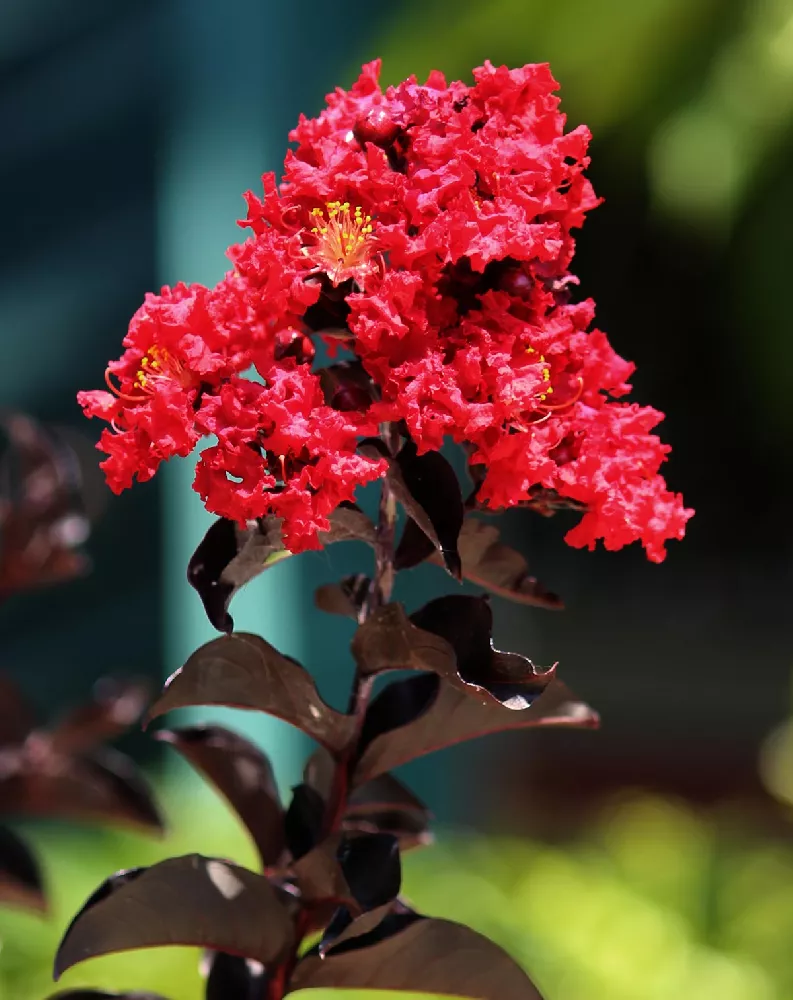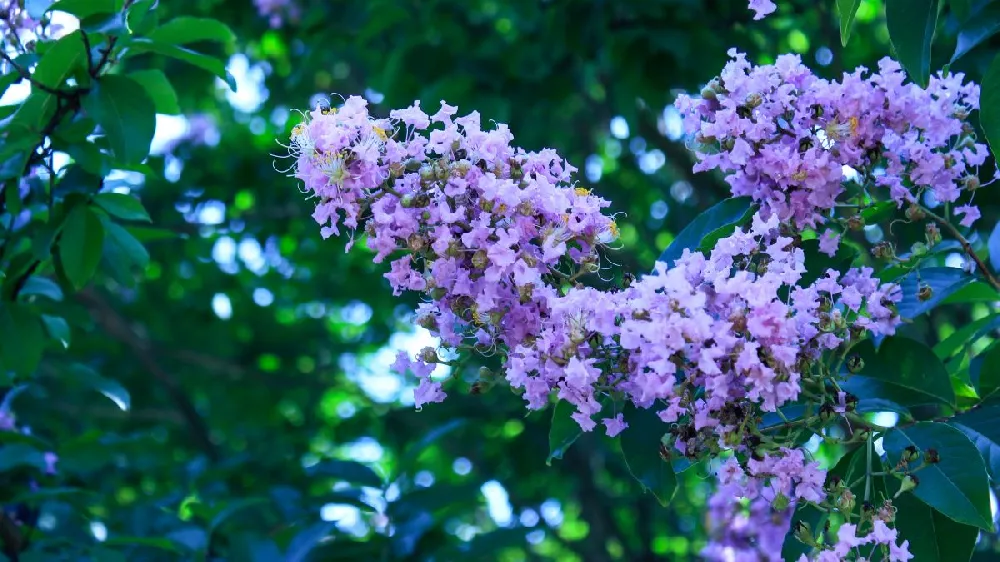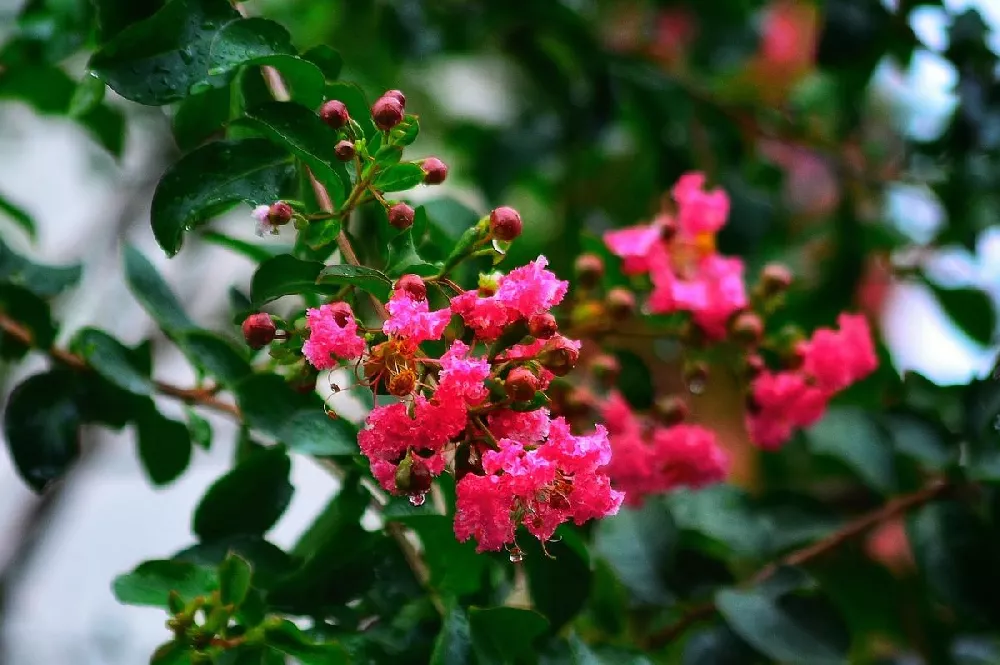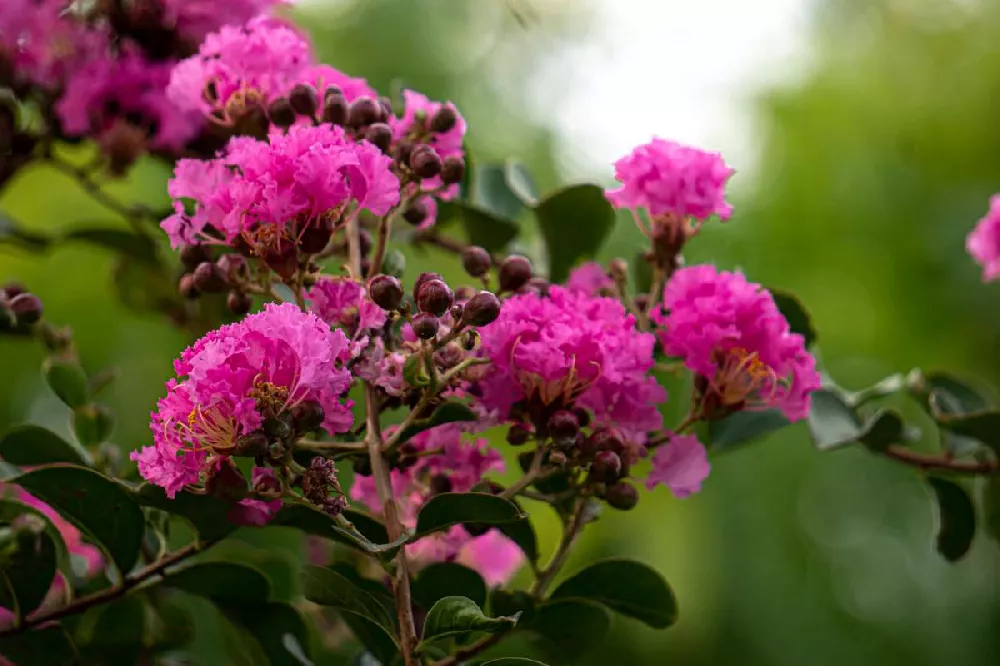Black Diamond Crape Myrtle: Best Red for Sale - Buying & Growing Guide
With their profuse summer blooms, nobody would argue that crape myrtles aren’t showy plants, but the Black Diamond crape myrtle: Best Red, Lagerstroemia indica, is in a class by itself. The flowers are a deep, rich red that appear from early summer through fall. The flowers are set off by the shrub's unusual nearly-black foliage and branches, making for a display that will stop your neighbors in their tracks. A mid-sized shrub that tops out at 10 to 12 feet, a single specimen looks great on a front yard, while a grouping of three or more will have you taking out your sunglasses because of the bright, vivid colors. It's a hardy plant, too, that requires little extra care. Want some reasons to bring this cape myrtle into your life? Here are a few:
- It is resistant to powdery mildew, a common problem for crape myrtles.
- This shrub can be container-grown if you live north of its natural range.
- It tolerates a range of soil types, from clay to sand.
Enter your zip code to find nearby stores that may carry this plant.
Plant Care
Sunlight

Plant your Black Diamond crape myrtle where it will get full sun — at least eight hours of direct light a day.
Watering
Water young shrubs weekly; established plants only need watering during droughts.
Fertilizing

These shrubs do best with regular feedings of a balanced, slow-release fertilizer in early spring and summer.
Planting and Care
Planting instructions
Site your Black Diamond crape myrtle where it will receive at least eight hours of sun a day, in soil that drains well. Unpot your shrub and tease out any encircling roots, which can girdle the tree and slowly kill it. Dig a hole that’s as deep as the root ball and twice as wide. Place the shrub in the hole, and, while holding it upright and steady, fill in around it with topsoil, tamping down as you go to eliminate air pockets. Water thoroughly. Apply a 2- to 3-inch layer of mulch around the root zone to conserve moisture and hinder weed growth.
Watering and nutrients
During your shrub’s first year, water regularly, as it is still working to establish its roots. Give it about an inch a week of water, unless it’s very hot, when it may need more. Once established, crape myrtles are drought-tolerant and should not need much supplemental watering. Fertilize in early spring with a balanced, slow-release fertilizer, such as a 10-10-10 formula, that is designed for landscape trees and shrubs.
Pollination
Crape myrtles are monoecious, meaning that a single plant has both male and female reproductive organs, although there may be increased seed production if multiple plants are near each other. Beneficial insects such as bees do the work of pollinating the flowers, which then produce small green berries that hold the seeds.
Pruning
Although crape myrtles can be grown as a single-trunk tree, most gardeners prefer to let the plants assume a more natural shrub form. Remove all but three to five of the branches that form at the base of the plant, including any suckers, and allow these to become the shrub’s main trunks. Trim out low branches if you wish to allow for easier mowing. Also prune out any dead, diseased, or damaged branches whenever you see them.
Pests and diseases
Pests that may be found on crape myrtles include crape myrtle aphids. These aphids excrete a substance called honeydew which attracts other insects and also causes sooty mold fungus. Beneficial insects, such as ladybugs and green lacewings, can be released to fight aphid infestations. Common diseases of the crape myrtle include powdery mildew, although the Black Diamond crape myrtle is resistant, and cercospora leaf spot, which occurs during humid weather. Keep the area around the plant clean of leaf litter, and water the base of the tree, not the leaves, to minimize the risk.
Achieving maximum results
Crape myrtles are common shrubs in the southern U.S., but what if you live in more northern regions? Fortunately, the Black Diamond crape myrtle acclimates well to being grown in a container, so it’s possible to grow it as a patio plant that is brought inside for the winter. Container growing is not that different from growing in the ground. Choose a pot for your shrub that is about twice the size of the root ball, and use your directions above for planting. Note that container-grown plants often need more supplemental watering than those grown in the ground, and be diligent in feeding your container-grown crape myrtle. In winter, it can be kept in a basement or other protected spot, and it should be watered lightly.
FAQs
Where can the Black Diamond crape myrtle be grown?
How big does Black Diamond crape myrtle get?
Maximum height for the Black Diamond crape myrtle is roughly 10 to 12 feet, with a mature width of 4 to 5 feet. The shrub can be kept somewhat shorter through judicious pruning, but be careful to avoid "crape murder" — the practice of cutting back all branches to the central trunk each year. This weakens the shrub and may impact its health.
How is this shrub best used in a landscape setting?
When you have a shrub as spectacular as the Black Diamond crape myrtle, there are few limitations. It's an excellent specimen shrub for a front yard, either as a single planting or in a larger grouping of three or five. It can be used as a foundation planting, although it should be sited at least 5 feet away from the building. In a mixed perennial bed, it makes an excellent backdrop for flowers that have lighter colors that will contrast against the crape myrtle's dark leaves.
Compare Similar Products
Customer Reviews
 Eagerly waiting
Eagerly waitingYoung plant arrived in good condition. Planted outside (zone 9) within 2 days of receiving it (9days ago, as of time of this post) I love the idea of red flowers on a dark (black) background of leaves. Without the flowers, my plant looks almost like it's wilting or dead. I see little buds starting out on the branches so I don't think the plant is dead... It definitely isn't growing as quickly as my damaged catawba crape myrtle that arrived and planted at same time but put out 4 new shoots off of branches that were all broken off. Not sure if branches broken off served as stimulus for growth and this is unfair comparison... Looks to be Anyways, it's 9 days in the ground. I'm watching it's growth.
 Black Diamond Crepe Myrtle in West Virginia
Black Diamond Crepe Myrtle in West VirginiaBeautiful & healthy. Planted August 2020, hoping it will make it through the winter.
 HAPPY WITH MY CRAPE MYRTLES!!
HAPPY WITH MY CRAPE MYRTLES!!Its awesone, loving the new blooms!!!!
 Excited to see this tree grow
Excited to see this tree growI had a positive experience purchasing the crape myrtle. I can't wait to see it grow and bloom.
You can't add more Product Name - Product size to the cart.
OK






